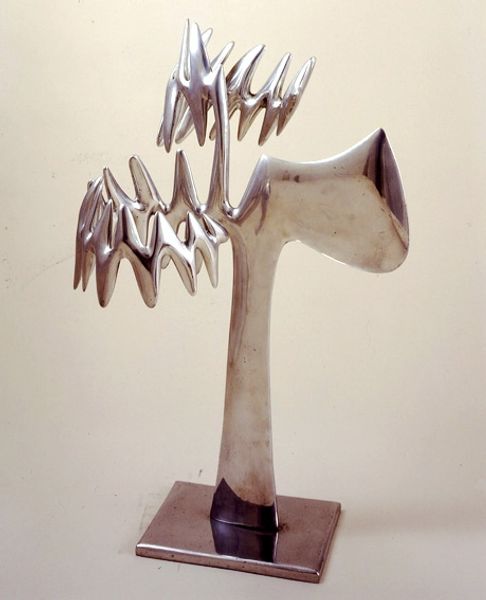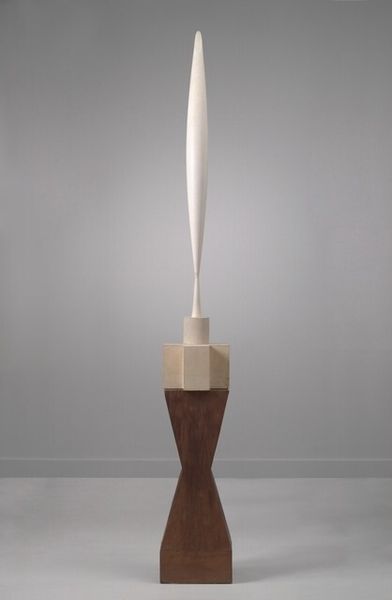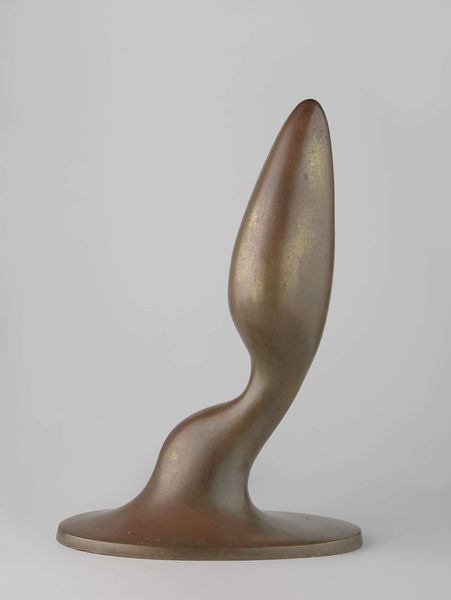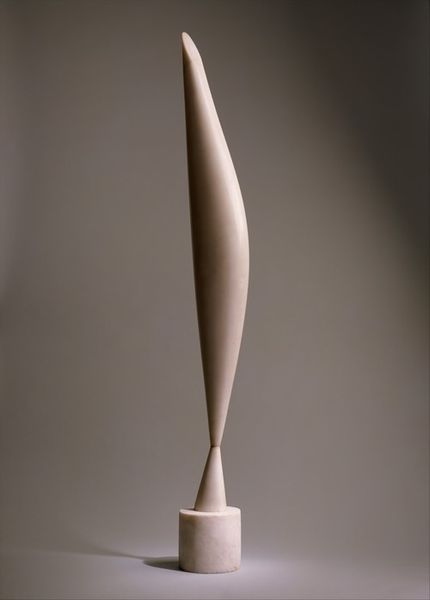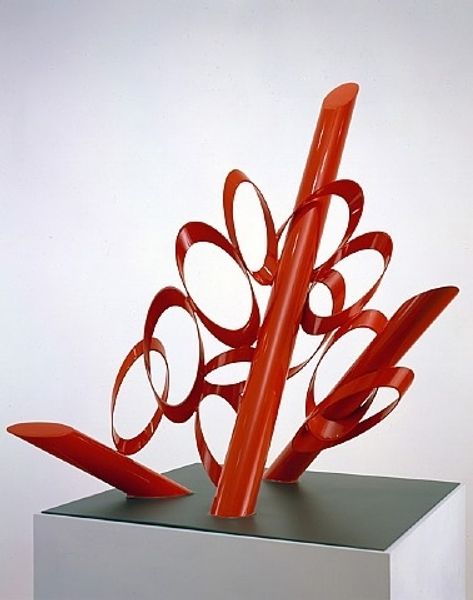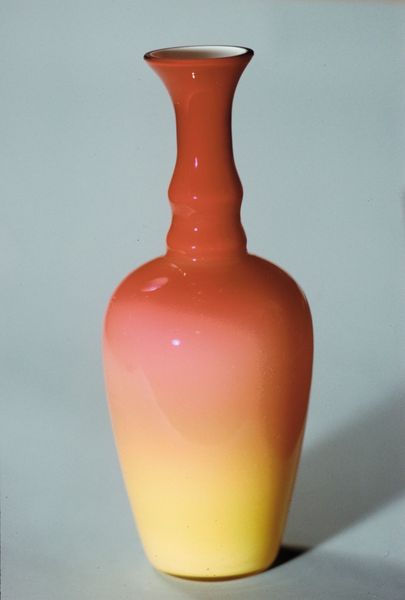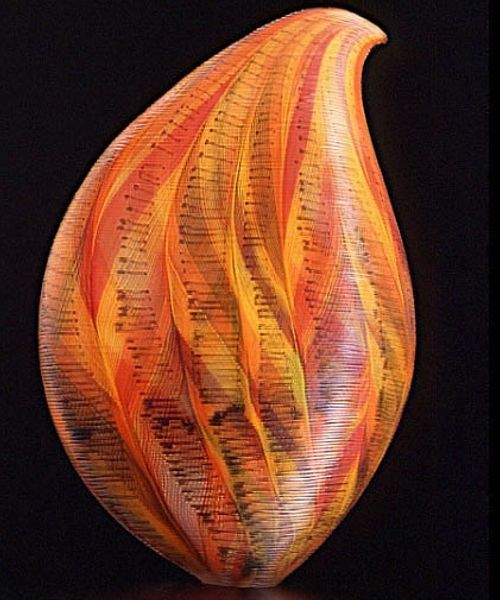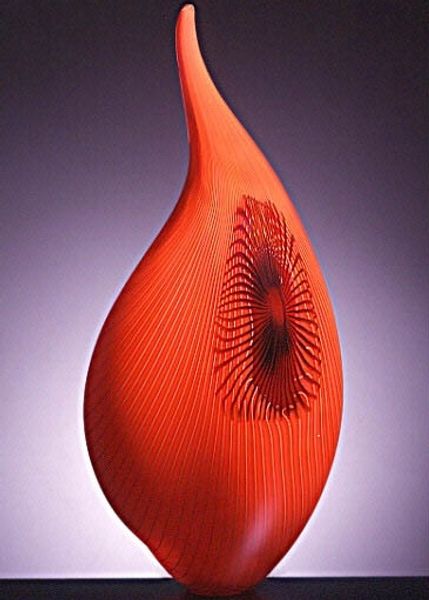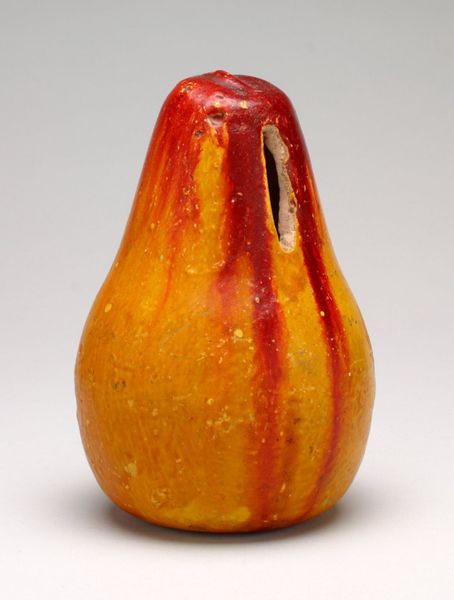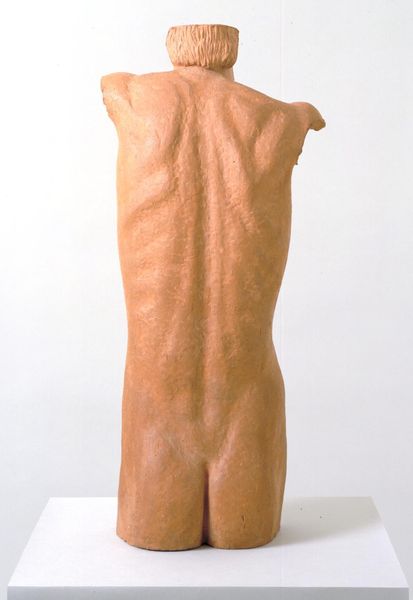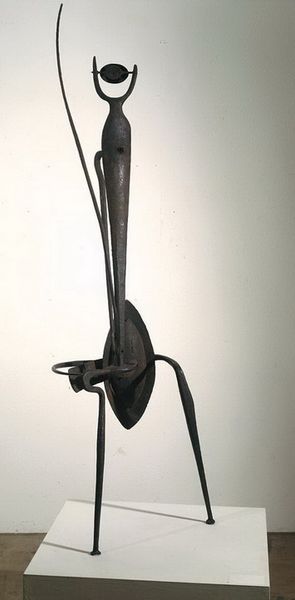
#
gouache
#
sculptural image
#
curved letter used
#
possibly oil pastel
#
muted smudged
#
underpainting
#
watercolour bleed
#
watercolour illustration
#
abstract character
#
watercolor
Copyright: Alina Szapocznikow,Fair Use
Curator: This is "Sculpture Lampe" by Alina Szapocznikow, created in 1971. It looks like an intriguing use of synthetic materials. What are your initial thoughts? Editor: It has this otherworldly feel, almost alien. The glow against the neutral, almost sickly, base... it’s unsettling, yet strangely alluring. The bulbous form evokes something organic. Curator: Absolutely. Szapocznikow masterfully plays with form. Notice how the light emanating from the bulb—nestled within this mammary-like form—draws your eye upwards. The curve of the stem guides that visual pathway, culminating in the wider, hat-like shade above. It’s a beautifully executed composition in terms of line and form. Editor: What intrigues me is the process. Given her focus on the body, one wonders how she manipulated these materials – polyester resin, I believe - to echo fleshy forms. Was it poured? Cast? It definitely seems to speak to the possibilities—and maybe also the limits—of post-war synthetic innovation. Curator: A crucial point. The tension lies not just in its aesthetics, but also in the materials themselves. Szapocznikow's oeuvre often explores the transient nature of the human form, and using plastics - materials prone to degradation and change – adds another layer of complexity. Semiotically, the work questions permanence itself. Editor: Indeed. And it highlights a certain ephemerality. This tension between the desired longevity of art and the built-in obsolescence of the chosen media surely informs the viewer's perception. Is it about memorialization, or an acceptance of decay and transformation? Curator: Precisely! This lamp, seemingly functional, becomes a vessel for much deeper existential questions, questioning ideals of both utility and permanence. Editor: Ultimately, whether seen as a critique of consumerism or a personal exploration of corporeal fragility, it offers a compelling example of the dialogue between materiality and meaning. Curator: It leaves one reflecting on the poignancy of physical existence mediated through modern technologies, definitely. Editor: I’ll agree it makes you think, even if its visual language initially unnerves.
Comments
No comments
Be the first to comment and join the conversation on the ultimate creative platform.
